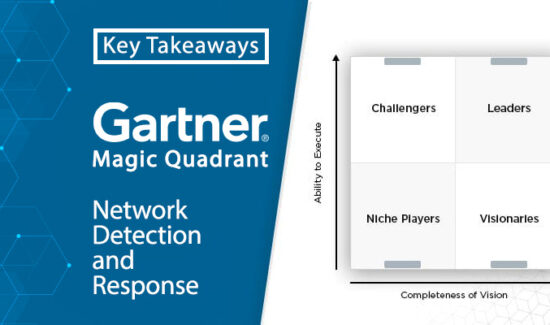What’s Changed: 2023 Magic Quadrant for APM and Observability


The editors at Solutions Review highlight what’s changed in Gartner’s 2023 Magic Quadrant for APM and Observability and provide an analysis of the new report.
Analyst house Gartner, Inc.’s 2023 Magic Quadrant for APM and Observability has arrived. Gartner defines the application performance monitoring (APM) and observability market as software that enables the observation and analysis of application health, performance, and user experience. Gartner reports that the user market for APM is represented by IT operations, site reliability engineers, cloud and platform ops, application developers, and product owners.
Key features and capabilities, according to Gartner, when choosing an APM platform should include automated discovery and mapping of an application and its infrastructure components. Network automation can be based on artificial intelligence (AI) or machine learning (ML). Network monitoring should be able to watch the activity on both mobile and desktop endpoints. It should have native integration capabilities with automation and service management tools and public cloud service providers (IE CloudWatch, Azure Monitoring, etc.). Overall, the platform should be capable of analyzing application performance problems and their impact on business productivity.
In the market for APM solutions? Read our free APM Solutions Buyer’s Guide here!
2023 Magic Quadrant for APM and Observability
In this Magic Quadrant, Gartner evaluates the strengths and weaknesses of 19 providers that it considers most significant in the marketplace and provides readers with a graph (the Magic Quadrant) plotting the vendors based on their ability to execute and completeness of vision. The graph is divided into four quadrants: niche players, challengers, visionaries, and leaders. At Solutions Review, we read the report, available here, and pulled out the key takeaways. This is not an in-depth analysis, only an observation of notable changes since the 2023 report.
Gartner highlights the following providers in the application performance monitoring market: Dynatrace, Datadog, New Relic Splunk, Honeycomb, AWS, Cisco, Microsoft, IBM, Grafana Labs, ServiceNow, Elastic, Logz.io, Oracle, Sumo Logic, SolarWinds, Broadcom, Riverbed, and ManageEngine.
Leaders
In the Leaders quadrant, Datadog and Dynatrace switch places, with Dynatrace moving up and Datadog moving down. The Dynatrace platform comprises Infrastructure Observability, Application Observability, Security Protection, Security Analytics, Digital Experience, Business Analytics, Automations, and Custom Solutions. Its geographically-diversified operations focus on EMEA, North America, and the mature APAC region. Their customers tend to be large global enterprises. New Relic retains its position, followed by former Visionary, Splunk. The Splunk Observability Cloud covers many areas of observability, including infrastructure, APM, DEM, AIOps, and incident intelligence. Its operations are geographically diversified, and its customers tend to be large enterprises. Splunk’s roadmap includes AI-directed end-to-end full-stack observability for hybrid environments, integration across observability and security, and visibility and controls into metrics platform usage and costs. IBM moved to the Challengers. And Honeycomb retains its spot at the bottom of the quadrant.
Challengers
In the Challengers quadrant, Amazon Web Services (AWS), Cisco, and Microsoft retain their positions. Sumo Logic vacates its spot, joins the Niche Players, and is replaced by former Leader, IBM. IBM acquired Instana in 2020, and its Instana APM product is offered as a SaaS product and as a self-hosted option, using a single-agent architecture. Its operations primarily focus on North America and Western Europe, with fewer clients in other regions. Its client base is midsize-to-large enterprises. IBM’s monitoring portfolio includes mainframe as well as modern cloud architectures. IBM’s roadmap includes an upcoming synthetics monitoring component and advances to its AI-assisted remediation capacity.
Visionaries
With Splunk now in the Leaders quadrant and VMWare out of the square all together, the doors are now open to new Visionaries, Grafana Labs, and ServiceNow. In the APM and observability realm, Grafana Labs offers enterprise and SaaS versions of Mimir (metrics), Loki (logs), and Tempo (traces), as well as Grafana Enterprise for visualization. Its customers are global, but centered in the Americas and EMEA. Recent activities include the acquisition of continuous profiling vendor Pyroscope, the release of a Kubernetes monitoring solution, and a unified incident response management suite. ServiceNow’s offering is Cloud Observability (formerly Lightstep, an acquisition completed in 2021). ServiceNow’s operations are global, primarily in North America and EMEA, with a growing presence in APAC. ServiceNow has clients in all verticals, including financial services, government, healthcare, and manufacturing. To date, Cloud Observability has been maintained as a separate SaaS offering and is outside the core ServiceNow Now Platform. ServiceNow’s roadmap for Cloud Observability includes expanding use cases around DEX and remediation, and a focus on tighter integration with the core ServiceNow Now Platform. Elastic and Logz.io retain their positions.
Niche Players
In the Niche Players, Alibaba Cloud is out. Oracle takes its place at the top of the quadrant, followed by former Challenger, Sumo Logic. Sumo Logic’s Observability platform is focused on providing availability, performance, and security analysis via SaaS monitoring. Its operations are geographically diverse, and its clients include enterprise and midmarket segments. Sumo Logic’s roadmap includes enhanced analytics use cases, an evolution of Kubernetes observability, RASP, and an increased contribution to OpenTelemetry. SolarWinds moved up a few spots. Riverbed moved down a few spots, dropping just below Broadcom, who held their position. ManageEngine retains its position near the bottom of the quadrant from last year.




















